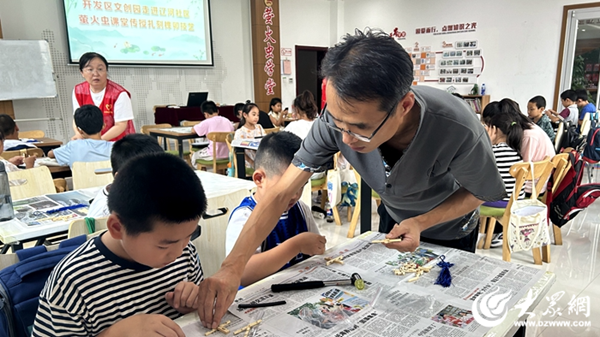
The Dongying Economic and Technological Development Zone – located in Dongying city, in East China's Shandong province – is home to a workshop where Yang Lei, the fourth-generation inheritor of a braiding and carving technique, is dedicated to preserving the ancient craft.
His meticulously crafted models of traditional Chinese buildings, birdcages and cricket cages are said to exemplify both artistic elegance and practical utility, offering a unique window into China's cultural legacy.

Yang Lei becomes fully engrossed in crafting a model of a pavilion. [Photo/Dazhong News]
The braiding and carving technique, which originated during the Song Dynasty (960-1127), combines mortise-and-tenon woodworking techniques with bamboo-bending methods.
Using materials such as straw and bamboo strips, artisans employ cutting, carving and assembly techniques to create intricate structures without the use of nails. The precision and ingenuity of this craft is viewed as highlighting the architectural brilliance of classical Chinese construction.

This beautiful lantern, crafted using the braiding and carving technique, was made without the use of nails or glue. [Photo/Dazhong News]
According to Yang Lei, the braiding and carving technique reflects the principles of balance and stability found in traditional Chinese design. His works have been shown at the China Intangible Cultural Heritage Museum, introducing this intricate art to a broader audience.
In addition to his creative endeavors, Yang regularly organizes workshops and training sessions within the local community, providing residents with hands-on experience in this craftsmanship. He aims to pass on this traditional technique to younger generations, ensuring the know-how continues.

Yang Lei provides guidance to locals in learning the braiding and carving technique. [Photo/Dazhong News]